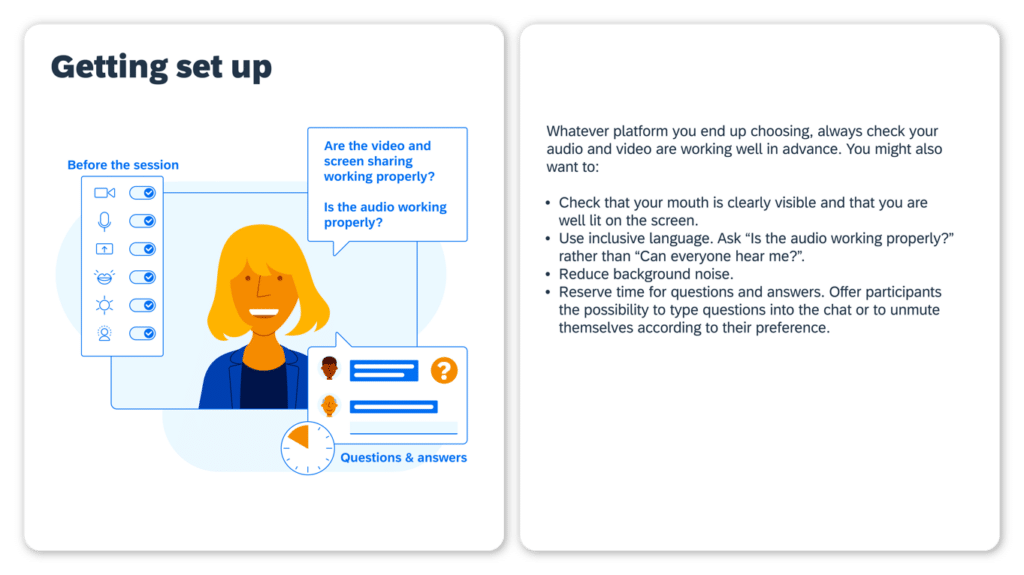It’s been almost two years since remote working and online meetings became the new normal. And while doing business on platforms such as Microsoft Teams or Zoom presents many challenges that we’ve learned to adjust to – kids in the background, spotty Wi-Fi, zoom fatigue – others remain hidden altogether.
For example, have you ever considered how a deaf colleague might struggle to follow along during a virtual team meeting with cameras off? Or how overwhelming it might feel for a colleague on the spectrum to hear the background noises of your unmuted microphone? That’s the thing about privilege: we don’t need to consider the things that don’t directly affect us.
When things are designed for you, it’s easy to overlook that anything is wrong, or that someone with different needs may not be having the same experience as you. But the facts speak for themselves. According to the World Health Organization, there are around one billion people currently living with a disability worldwide. That’s about one in seven of us, including many of the coworkers who you encounter daily on the other side of your screen or maybe even yourself.
An Inclusive Work Culture – Making a Choice Not to Leave Anyone Out
At SAP, we believe in cultivating an inclusive work culture made up of people with different abilities and backgrounds. That means making conscious choices through our actions to not leave anyone behind. When it comes to virtual presentations and meetings, all colleagues should be enabled to participate and contribute. That’s why we took the time this year to create a set of simple guidelines for conducting virtual meetings and presentations that are accessible for everyone.
The team of accessibility experts who developed the guidelines, some of whom live and work with disabilities themselves, set out to educate SAP employees on best practices for preparing and conducting virtual sessions. Now, we are carrying that message forward by bringing you a set of free, downloadable inclusive meeting cards to read through, bookmark, use, and share with your friends and colleagues.
How Do You Run an Inclusive Meeting?
These inclusive meeting cards will help you to prepare and run your sessions for the widest possible audience, including people with hearing or visual impairments, neurodiverse colleagues, and colleagues who are non-native speakers. No, non-native speakers aren’t disabled, but that’s the thing with inclusion: opening up the way we do things creates new opportunities for use for everybody. For example, using closed captioning is a critical feature for people who are hard of hearing, but at the same time it can be extremely beneficial for non-native speakers, or even working parents with a sleeping baby on their arms who may want to turn the volume down.
Anyone who hosts online meetings or presentations will benefit from knowing how to run a more inclusive meeting. Here’s a quick peek at what you can expect from the download.
Each graphical card is accompanied by a detailed text description of an inclusive meeting prompt. There’s information on:
- Preparing the session, including choosing the interaction platforms
- Structuring slides, using the right wording, appearance, animations, screen reader support, and running accessibility checks
- Using and sharing pre-recorded video and audio
- Running the session, including how to set the scene (lighting, positioning) and how to optimize the way you speak

The cards can be downloaded both as a PowerPoint presentation or as a PDF.
The PowerPoint file is our accessible version, containing high-contrast images with alternative text, and is screen-reader friendly. Enjoy scrolling through the virtual card set and know that creating an inclusive work culture is actually quite an easy thing to do.
Learn more about accessibility and inclusion at SAP and follow SAP Design via the SAP Fiori topic page for more design and user experience content.
Andrea Waisgluss is a content strategist for SAP Design.
